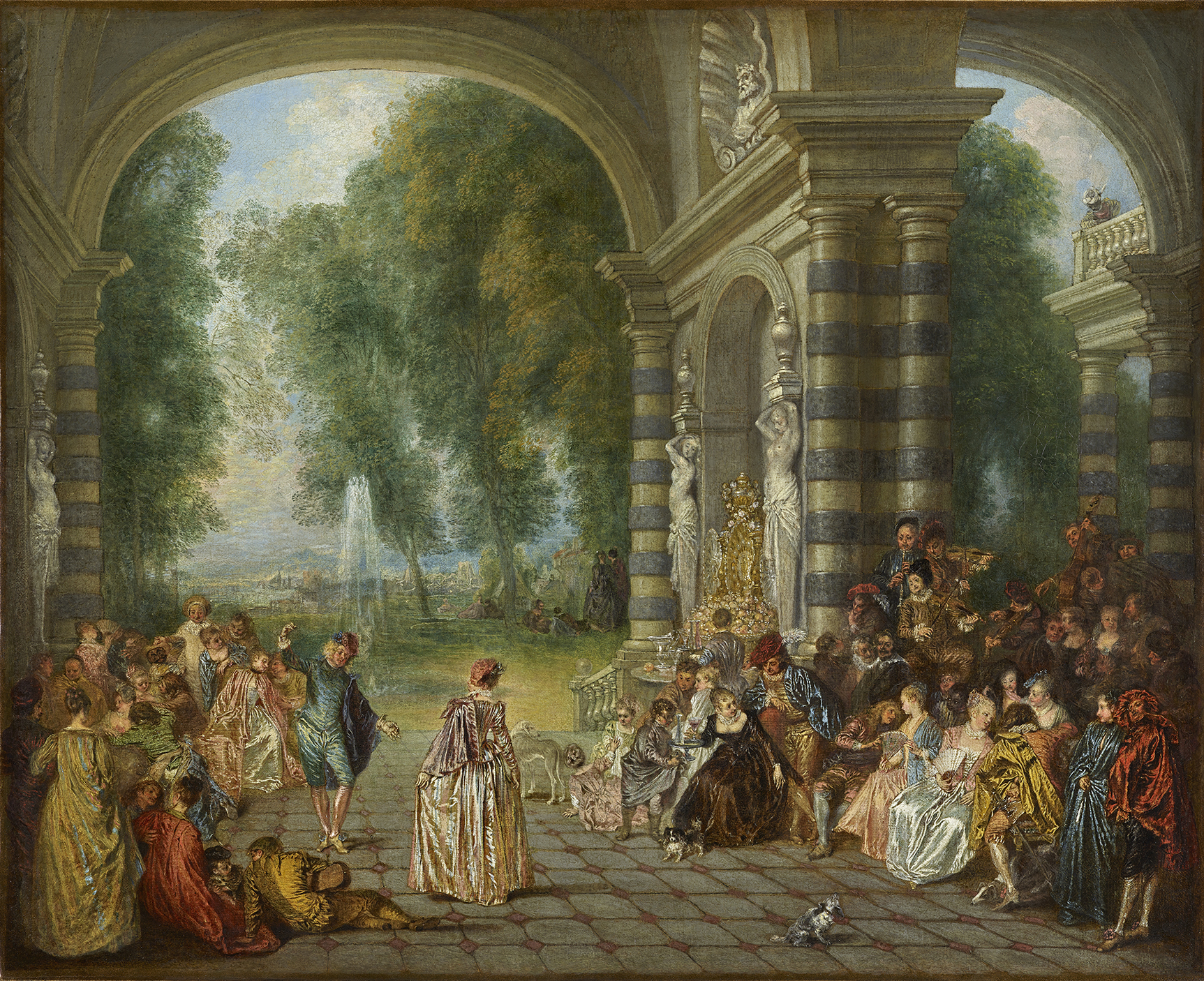The Pleasures of the Ball
At the centre of this elegant gathering is a couple dancing a minuet, a popular and elaborate aristocratic French dance. The groups either side engage in numerous conversations and playful exchanges. The variety of poses, gestures and expressions within the crowd attests to the French painter Antoine Watteau's (1684–1721) skill in suggesting complex interactions with just a simple glance or turn of the head. This type of scene is known as a fête galante, of which Watteau is the best-known creator. In a fête galante, figures engage in gentle flirtations and games of love in idealised and dream-like garden settings.
Fêtes galantes, including this one, sometimes portray characters from the Italian theatrical tradition of the commedia dell’arte – a type of sketch comedy with stock characters. Among the commedia characters on the left of this painting are Pierrot and Harlequin. Pierrot, the ‘sad clown’ figure, is at the back, dressed in white with a round cap. Harlequin, the so-called ‘trickster’, is to the left of Pierrot, wearing a characteristic brown, bearded mask. Harlequin’s mask has been identified as an early example of theatrical blackface, signalling how the commedia dell’arte participated in solidifying racist tropes in early modern European visual culture. Among the predominantly white crowd, there are two depictions of Black figures. One boy peers over the shoulders of the two ladies fanning themselves on the right-hand front row, appearing to meet the searching gaze of the woman with a dog at her feet. The turbaned man, high up in a balcony to the right, surveys the festivities below. He has perhaps been noticed by the little dog who looks upwards in the foreground.

